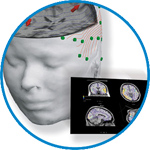- Home
- About ANT
-
Products

asa
asa is a highly flexible EEG/ERP and MEG analysis package with a variety of source reconstruction, signal analysis and MRI processing features.
.jpg)
eego mylab
The new frontier in multimodal brain research. With up to 16 kHz sampling rate, 256 EEG channels and unique software features, eego mylab gives you an unprecedented in-depth understanding of the human brain.

eego sports
eego sports offers complete freedom to collect high-density EEG data, bipolar EMG signals, and a variety of physiological sensor data, wherever and whenever required, with publish quality data in less than 15 minutes!

waveguard net
The waveguard net sets a new standard for research applications requiring high-density EEG data acquisition with quick preparation time, high flexibility, and subject comfort.

visor2
Our new and upgraded visor2 solutions integrate all the latest technologies for navigated rTMS, dual-coil navigation support, EEG-TMS recordings and pre-surgical evaluation for the highest quality in research and clinical procedures.

powerMAG ANT
The PowerMAG ANT 100 rTMS stimulator is designed for the specific needs of high-end TMS applications. Powerful high-frequency TMS as well as high precise single pulse and repetitive pulse protocols are combined in one single device.

xensor
xensor offers the solution for digitization of 3D electrode positions. xensor takes care of the whole procedure; it records, visualizes and stores positions acquired with a dedicated digitizer.

waveguard original
waveguard original is the cap solution for EEG measurements compatible with fMRI, MEG and TMS system. Use of active shielding guarantees performance in even the most demanding environments.

waveguard connect
waveguard connect EEG caps are a perfect match for hospitals and institutes aiming at reliable EEG, maximum uptime and great patient comfort! For optimal signal quality, the electrodes are made of pure, solid tin.

waveguard touch
waveguard touch is a dry electrode EEG cap. The unique Ag/AgCl coated soft polymer electrodes provide stable, research-grade EEG signals while maintaining subject comfort. The combination of these innovative dry electrodes and the industry-leading waveguard cap makes waveguard touch the best solution for dry EEG.

smartmove
smartmove allows planning of a complete TMS session ahead by defining stimulation sites based on anatomical MRI information and functional information like fMRI, PET or EEG/MEG.
Stay - References
- Support
- Events
- News
- Contact Us
You are here
Functional connectivity of the anterior cingulate cortex predicts treatment outcome for rTMS in treatment-resistant depression at 3-month follow-up
Functional connectivity of the anterior cingulate cortex predicts treatment outcome for rTMS in treatment-resistant depression at 3-month follow-up
Background and objective
Repetitive transcranial magnetic stimulation (rTMS) is a first-line treatment for treatment-resistant depression (TRD). The mechanisms of action of rTMS are not fully understood, and no biomarkers are available to assist in clinical practice to predict response to rTMS. This study aimed to demonstrate that after-rTMS clinical improvement is associated with functional connectivity (FC) changes of the subgenual cingulate cortex (sgACC) and rostral anterior cingulate (rACC), and FC of sgACC and rACC might serve as potential predictors for treatment response.
Methods
Resting-state functional magnetic resonance imaging (rs-fMRI) data were collected within 1 week before rTMS initiation in 50 TRD patients to predict subsequent response to rTMS on the left dorsolateral prefrontal cortex (DLPFC). Follow-up rs-fMRI was obtained 12 weeks after completion of rTMS and neural correlates of rTMS in sgACC- and rACC-related FC patterns were compared to before rTMS data and with rs-fMRI from healthy participants.
Results
Treatment response was associated with lower FC of sgACC to right DLPFC and higher FC of rACC to left lateral parietal cortex (IPL) measured at baseline. Using sgACC-DLPFC and rACC-IPL connectivity as features, responder-nonresponder classification accuracies of 84% and 76% (end-of-treatment), 88% and 81% (3-month follow-up), respectively were achieved. Longitudinal rs-fMRI data analyses revealed that the hyperconnectivity between sgACC and visual cortex was normalized to a level which was comparable to that of healthy participants.
Conclusions
Brain activity patterns in depression are predictive of treatment response to rTMS, and longitudinal change of brain activity in relevant brain circuits after rTMS is associated with treatment response in depression. Target engagement paradigms may offer opportunities to increase the efficacy of rTMS in TRD by optimal selection of patients for treatment.

 Read more
Read more.jpg)




